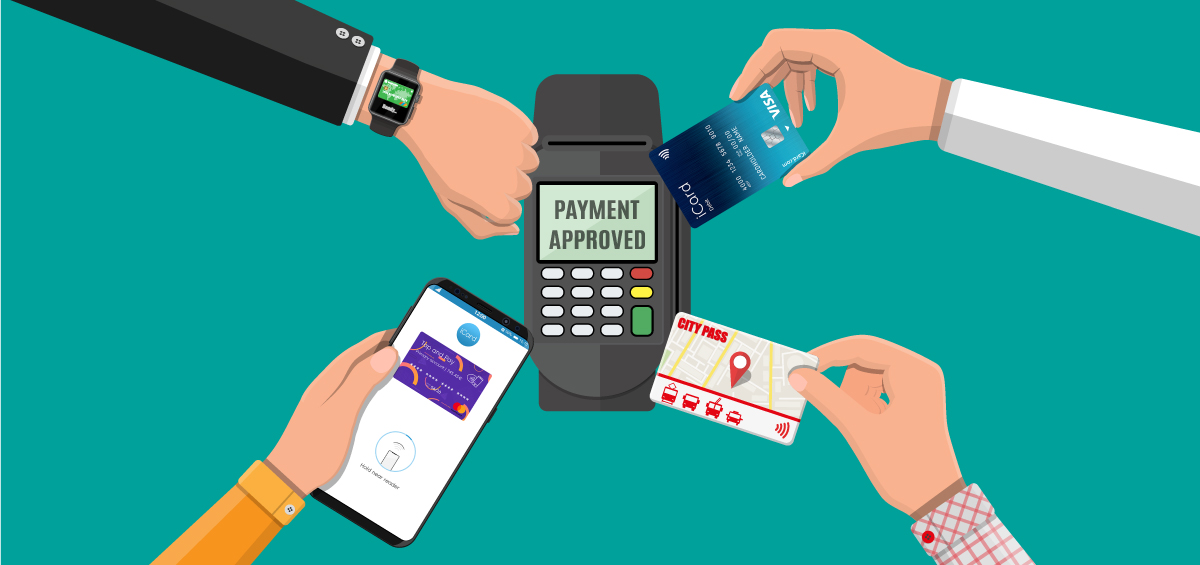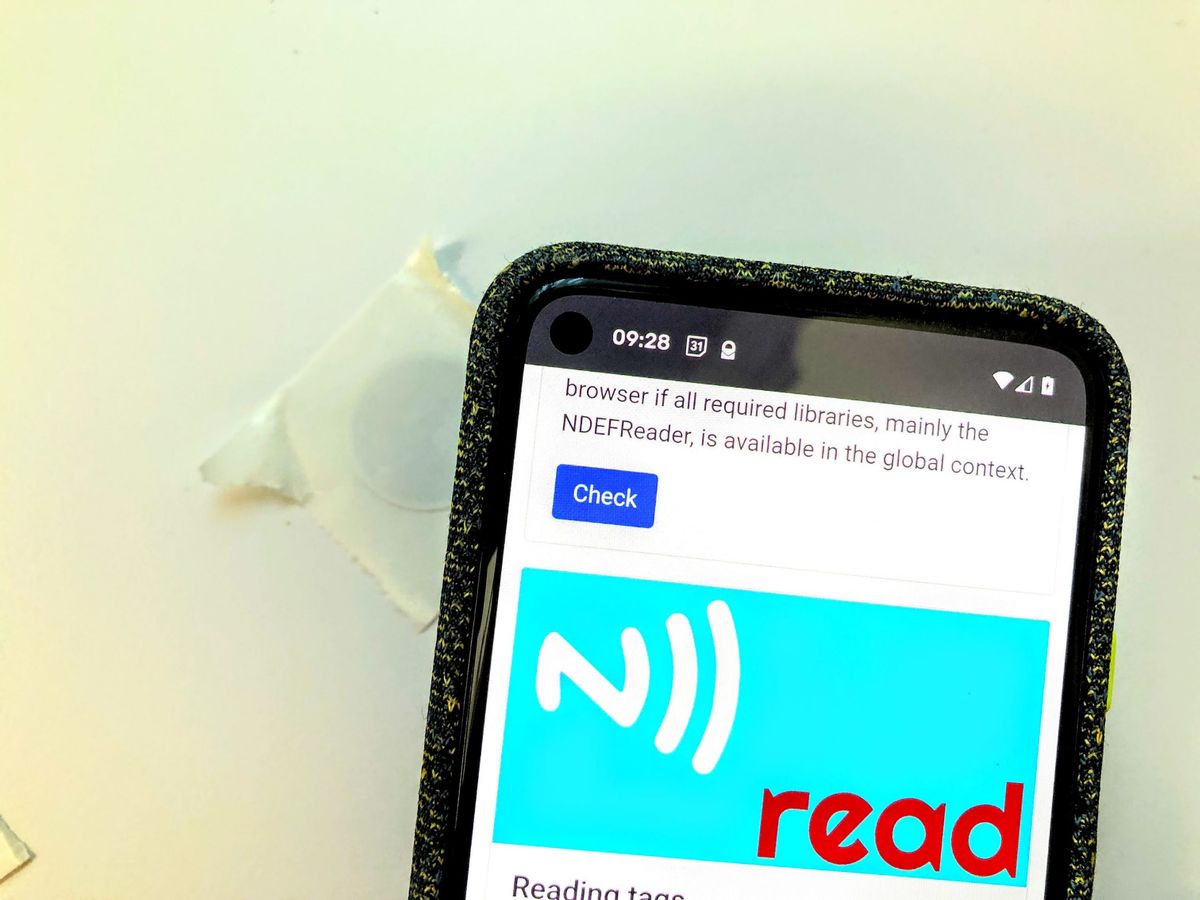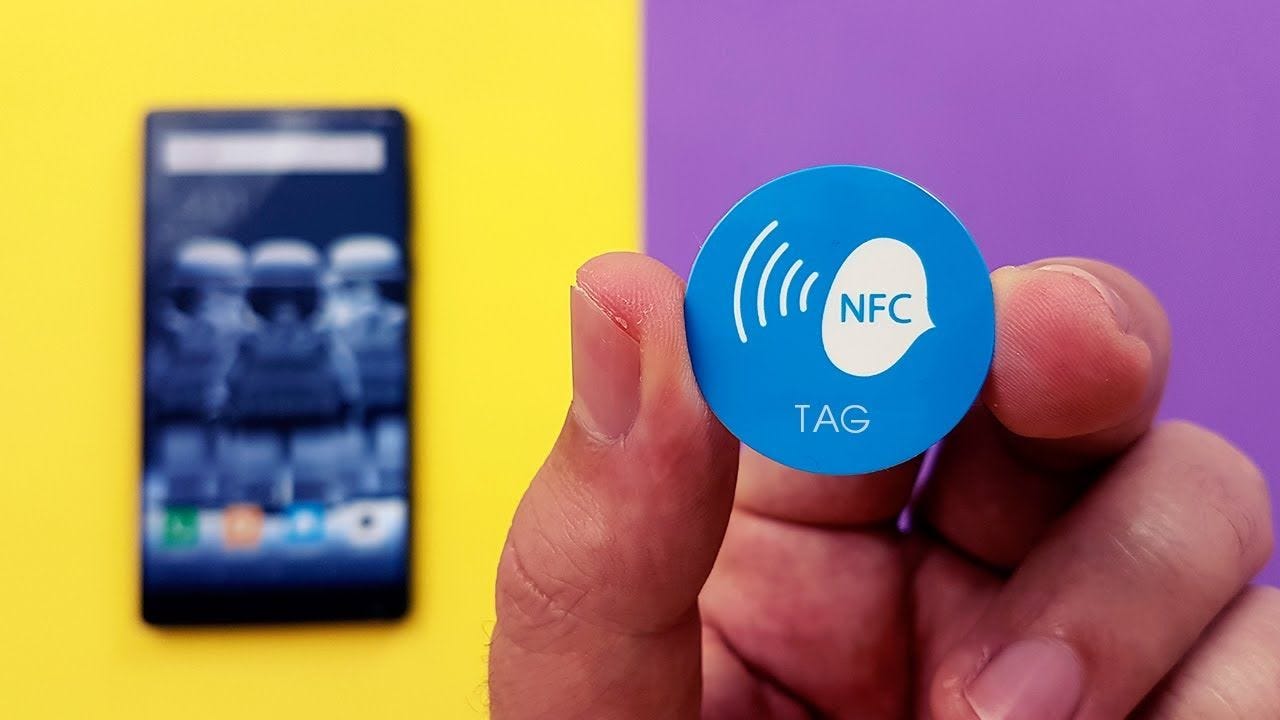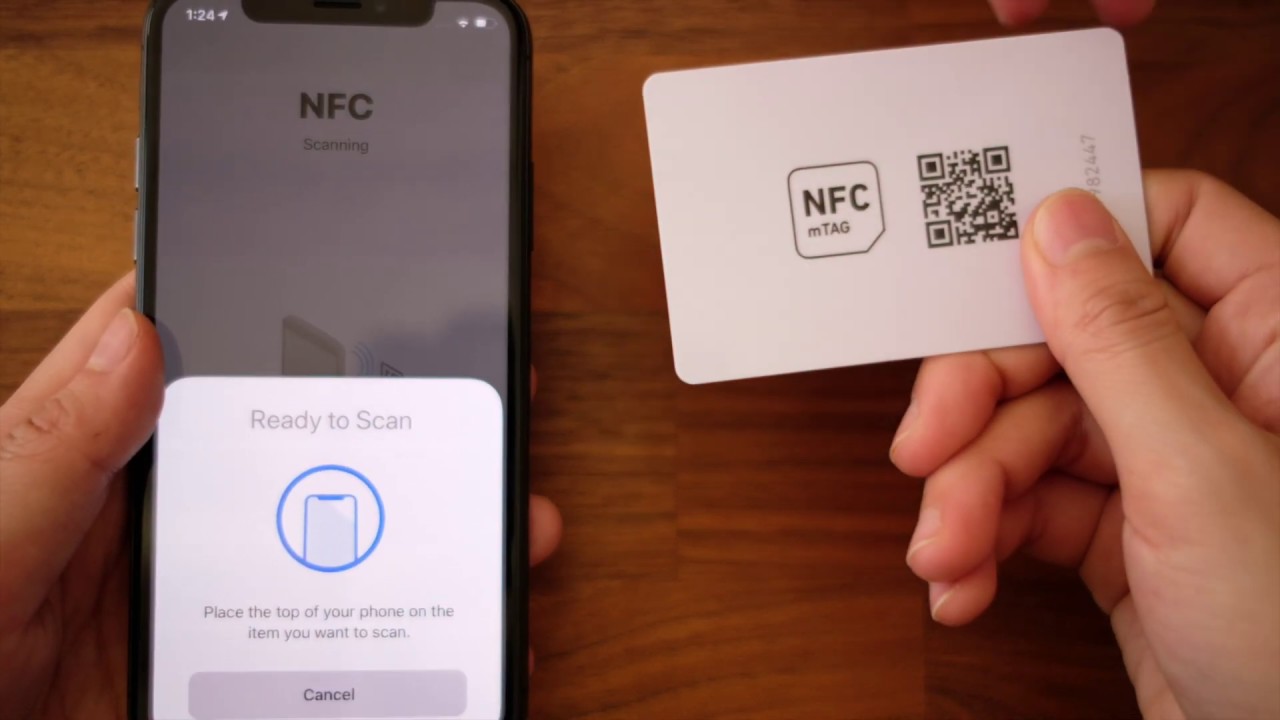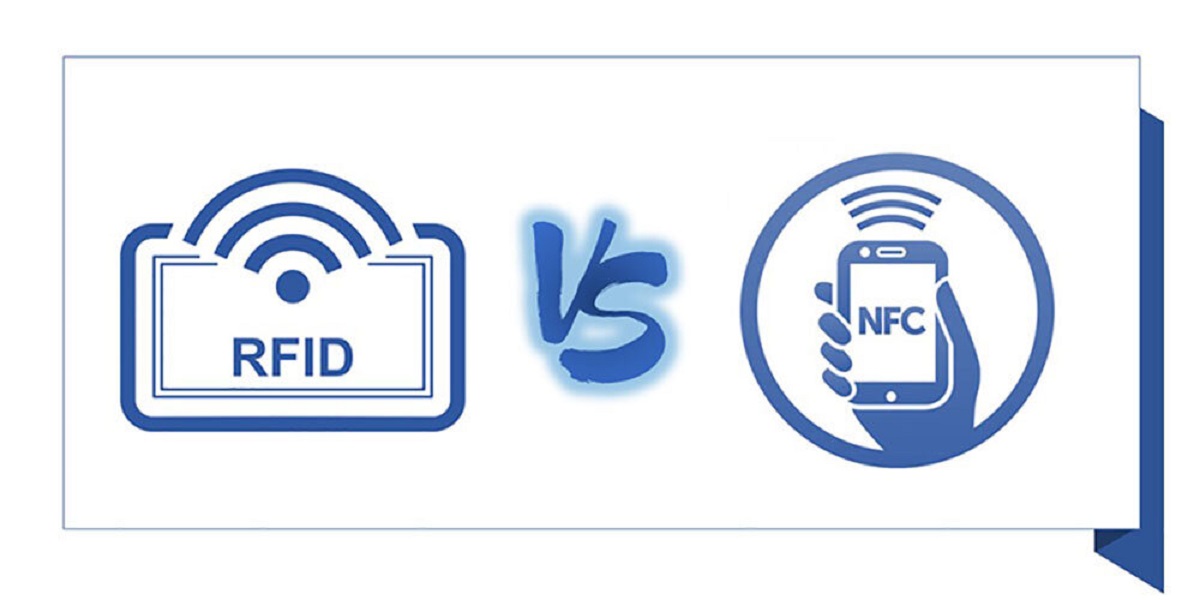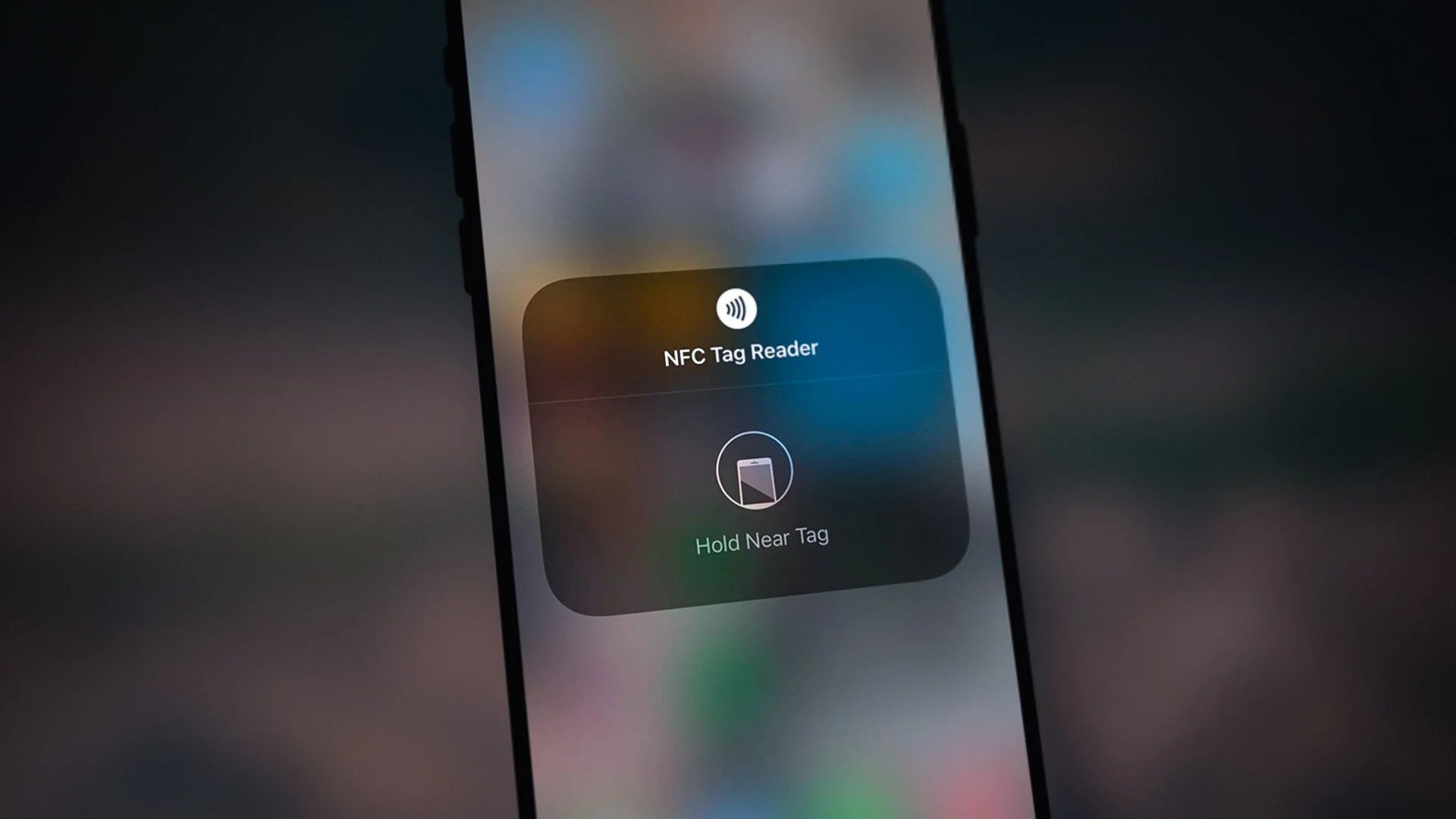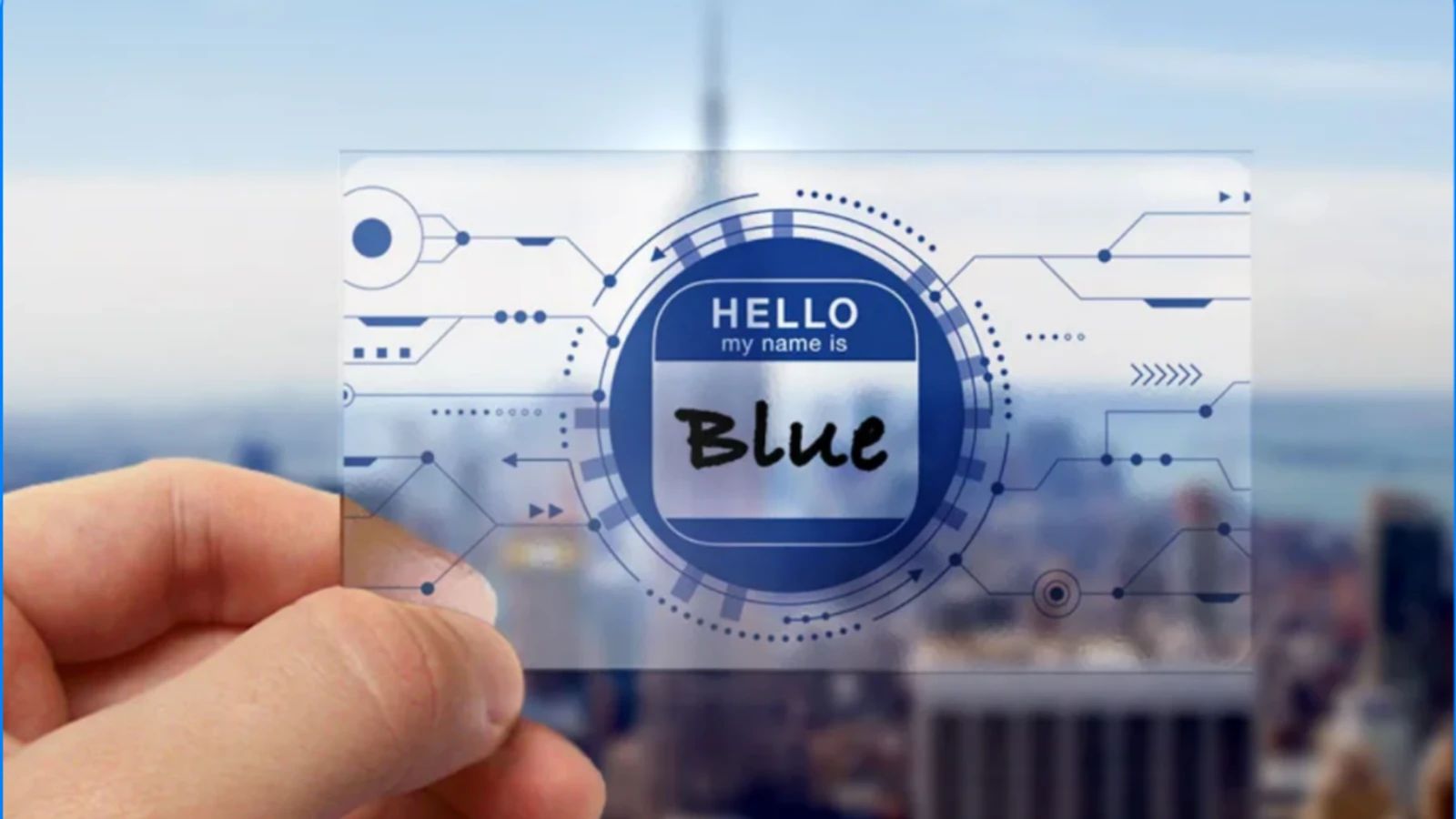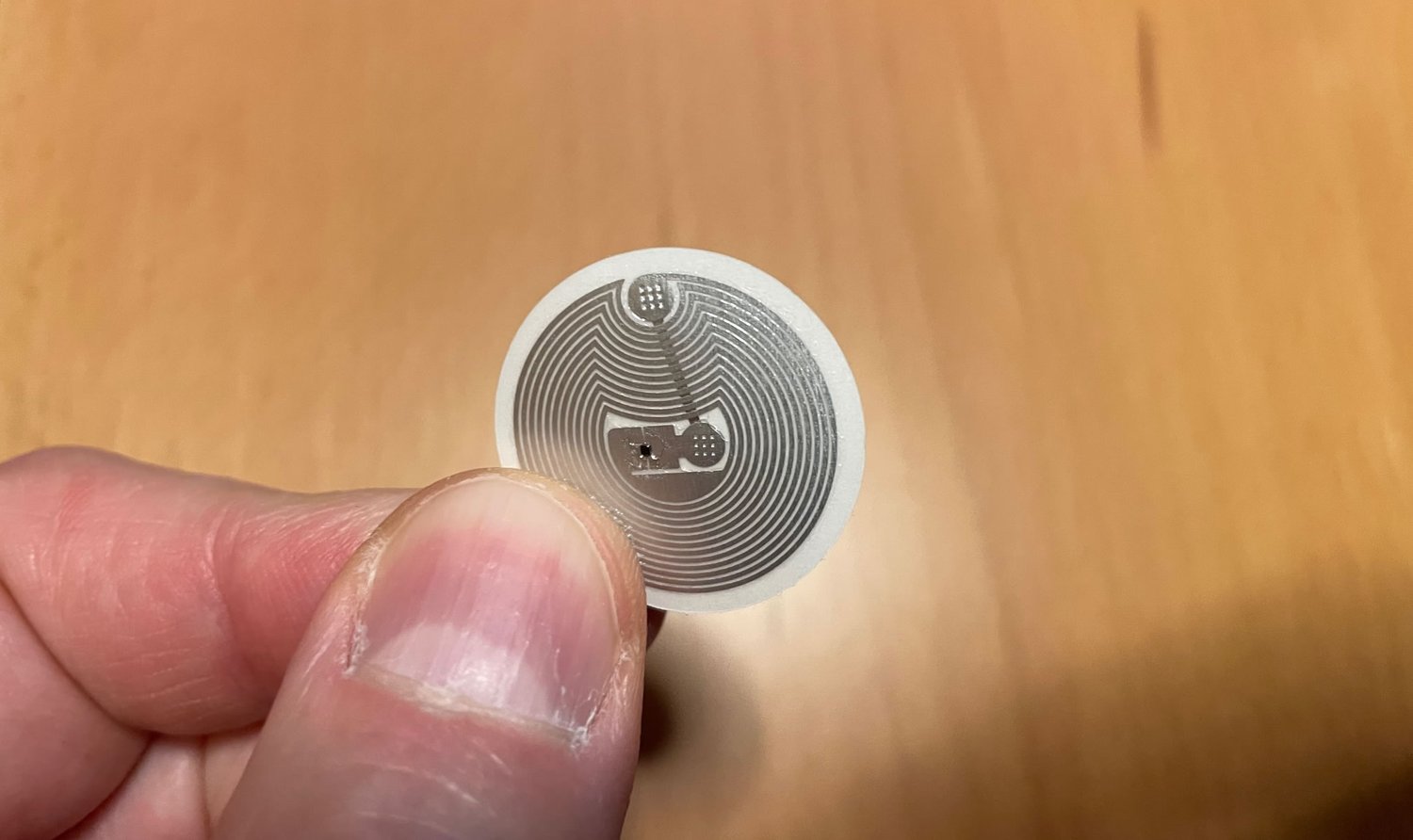Introduction
Near Field Communication (NFC) is a wireless technology that allows devices to communicate and transfer data with each other. It has become increasingly popular and widely used in various applications, such as contactless payments, ticketing, and data exchange. However, like any technology, NFC is not without its challenges. One common issue that users may encounter is an NFC read error.
An NFC read error occurs when a device fails to read the information stored on an NFC tag or when the tag cannot be recognized by the device. This can be frustrating and inconvenient, especially when you rely on NFC for tasks like making payments or accessing information.
In this article, we will explore the causes of NFC read errors and discuss the different types of errors that can occur. We will also provide some helpful tips and solutions to resolve these issues and get your NFC functionality back on track.
By understanding the reasons behind NFC read errors and the steps you can take to fix them, you will be better equipped to troubleshoot and overcome these challenges. So let’s delve into the world of NFC and uncover the secrets to resolving read errors!
What is NFC?
Near Field Communication (NFC) is a short-range wireless communication technology that enables devices to establish connections and exchange data over a short distance, typically within a few centimeters. It operates on the principle of electromagnetic induction, utilizing radio waves to facilitate communication between devices.
NFC technology is built upon Radio Frequency Identification (RFID) technology, which allows data to be transmitted wirelessly from an NFC-enabled device, such as a smartphone or tablet, to an NFC tag or another NFC-enabled device. NFC tags are small, passive devices that can be embedded in objects like stickers, cards, or even everyday items like posters or advertisements.
The key advantage of NFC technology is its simplicity and convenience. By simply bringing two NFC-enabled devices close to each other, they can establish a connection and transfer data. This makes NFC ideal for various applications, including contactless payments, ticketing systems, access control, and data transfer between devices.
NFC operates at a frequency of 13.56 MHz and supports two modes of communication: reader/writer mode and peer-to-peer mode. In reader/writer mode, the NFC-enabled device acts as the reader, allowing it to read data from NFC tags, such as website URLs, contact information, or product details. In peer-to-peer mode, two NFC-enabled devices can exchange data bi-directionally, enabling tasks like file sharing or initiating a Bluetooth connection.
One of the key features of NFC technology is its compatibility with existing contactless smart card technology, allowing NFC-enabled devices to communicate with contactless card readers. This means that NFC can be used for applications such as mobile payments, where users can simply tap their NFC-enabled device on a payment terminal to make a secure transaction.
In recent years, NFC has gained significant traction and is now found in a wide range of devices, including smartphones, tablets, smartwatches, and even some laptops. Its versatility, ease of use, and security features have made it a popular choice for many industries, including retail, transportation, and healthcare.
Now that we have a basic understanding of NFC and how it works, let’s explore some of the common issues that users may encounter, specifically NFC read errors, and how to address them.
How does NFC work?
Near Field Communication (NFC) technology operates on the principles of electromagnetic induction and radio frequency communication. It allows devices to establish a connection and exchange data when brought into close proximity, typically within a few centimeters.
NFC-enabled devices, such as smartphones or tablets, contain an NFC chip that generates an electromagnetic field when activated. This field can power passive NFC tags, which do not require a power source of their own. The tags utilize this energy to transmit information back to the device.
There are two primary modes of communication in NFC: reader/writer mode and peer-to-peer mode.
Reader/Writer Mode: In this mode, an NFC-enabled device acts as the reader and interacts with NFC tags. The device generates an electromagnetic field, which powers the tag and retrieves the information stored within it. This mode is commonly used in applications like contactless payment systems, access control, and information retrieval.
Peer-to-Peer Mode: In this mode, two NFC-enabled devices can communicate with each other bidirectionally. They can exchange various types of data, such as files, pictures, or information from applications. This mode is ideal for tasks like file sharing, initiating a Bluetooth connection, or even making peer-to-peer mobile payments.
NFC operates at a frequency of 13.56 MHz, which enables secure and efficient communication without interfering with other wireless technologies like Wi-Fi or Bluetooth. The communication range of NFC is typically limited to a few centimeters, which ensures that the devices engaged in the transaction are in close proximity. This inherent limitation enhances the security of NFC transactions, making it an ideal choice for secure applications like contactless payments.
Moreover, NFC technology incorporates various security features to protect sensitive data during communication. These features include encryption and authentication mechanisms, ensuring the confidentiality and integrity of the exchanged information.
To initiate an NFC transaction, the user simply needs to bring their NFC-enabled device close to the target, such as an NFC reader or another NFC-enabled device. The devices establish a connection automatically, and the data exchange begins. This seamless and user-friendly process has made NFC technology widely adopted in various industries, including retail, transportation, and healthcare.
Now that we understand how NFC technology works, let’s delve into the common issue of NFC read errors and uncover the potential causes and solutions to address them.
What is an NFC read error?
An NFC read error occurs when a device fails to read the information stored on an NFC tag or when the tag cannot be recognized by the device. This can happen for various reasons, causing inconvenience and frustration for users who rely on NFC technology for tasks like making payments, accessing information, or transferring data.
When an NFC-enabled device encounters a read error, it means that it cannot establish a successful connection or retrieve the desired data from the NFC tag. This can manifest in different ways, such as the device not recognizing the tag at all or displaying an error message indicating a failed connection.
There can be several factors contributing to an NFC read error, including technical issues with the NFC-enabled device, compatibility problems between the device and the NFC tag, environmental interference, or physical damage to the tag itself.
It’s important to note that an NFC read error is different from an NFC write error. An NFC write error occurs when the device fails to write data onto an NFC tag, whereas an NFC read error refers to the failure in reading existing data from the tag.
Resolving NFC read errors is crucial to ensure the smooth functioning of NFC-enabled tasks. By understanding the underlying causes and the common types of NFC read errors, users can troubleshoot and find effective solutions to these issues.
Now that we have a clear understanding of what NFC read errors are, let’s explore the different causes that can lead to these errors and the specific types of read errors that users may encounter.
Causes of NFC Read Errors
There are several factors that can contribute to NFC read errors. By understanding these causes, users can identify and address the issues that may be preventing successful communication between their NFC-enabled device and an NFC tag.
1. Physical Distance: NFC operates on a very short-range communication distance, typically within a few centimeters. If the device is too far away from the tag, it may result in an NFC read error. Ensuring that the device is brought close enough to the tag is essential for a successful connection.
2. Environmental Interference: Environmental factors such as radio frequency interference or electromagnetic fields can disrupt the NFC signal, leading to read errors. Common sources of interference include metal objects, electronic devices, and strong magnetic fields. It is important to be aware of these potential interferences and avoid them when using NFC.
3. Compatibility Issues: NFC-enabled devices and NFC tags must be compatible with each other in terms of protocols and encoding formats. If there is a mismatch between the device and the tag, it can cause read errors. Users should ensure that the devices they are using are compatible with the specific NFC tags they are trying to read.
4. Physical Damage: NFC tags can become damaged over time or due to physical impact. Scratches, dents, or other physical damage to the tag can affect its read performance. If the NFC tag is damaged, it may not be able to transmit the information properly, leading to read errors.
5. Software or Firmware Issues: Sometimes, read errors can occur due to software or firmware-related problems with the NFC-enabled device. Outdated software, corrupted firmware, or compatibility issues with the operating system can all result in read errors. Keeping the device’s software and firmware updated can help resolve such issues.
6. Power Issues: NFC tags are either passive or active. Passive tags rely on the power transmitted by the NFC-enabled device, while active tags have their own power source. If the power supply to the tag is inadequate or if the tag’s battery is weak, it can lead to read errors.
By identifying the specific cause of an NFC read error, users can take appropriate steps to resolve the issue. In the following sections, we will explore the common types of NFC read errors and provide solutions to help users overcome these challenges.
Common Types of NFC Read Errors
There are various types of NFC read errors that users may encounter when trying to establish a connection with an NFC tag. Understanding these common errors and their possible causes can help users troubleshoot and resolve the issues they face.
1. No Tag Detected: This error occurs when the NFC-enabled device fails to detect any NFC tag in close proximity. It could be due to a physical distance issue, where the device is not brought close enough to the tag for successful communication.
2. Tag Not Supported: In this case, the NFC-enabled device recognizes the presence of an NFC tag, but it does not support the specific tag’s encoding format or protocols. This error usually arises from compatibility issues between the device and the tag.
3. Read Error: A read error is encountered when the device attempts to retrieve data from the NFC tag, but it fails to do so successfully. This could be due to physical damage to the tag, interference in the environment, or incompatible encoding formats.
4. Corrupted Data: Sometimes, the data stored on an NFC tag can become corrupted, leading to read errors. This can happen due to various factors, such as physical damage to the tag, interference during data transfer, or software/firmware issues with the NFC-enabled device.
5. Slow Read Speed: This type of error occurs when the NFC-enabled device takes an excessively long time to read data from the NFC tag. It can be caused by factors like weak power to the tag, large amounts of data on the tag, or software/firmware issues.
Each type of NFC read error may have multiple possible causes. It is important to investigate the specific error message or symptom and consider potential factors such as physical distance, environmental interference, compatibility issues, physical damage, software/firmware issues, or power problems.
Resolving NFC read errors often involves troubleshooting the underlying cause and implementing appropriate solutions. In the following sections, we will provide specific steps and tips to fix NFC read errors, helping users regain the functionality and convenience of NFC technology.
Device-related NFC Read Errors
Device-related issues can often contribute to NFC read errors. These errors are caused by factors within the NFC-enabled device itself, such as hardware limitations, software/firmware problems, or incorrect settings. By identifying and addressing these device-related issues, users can restore the proper functionality of their NFC technology.
1. Outdated Software or Firmware: Using outdated software or firmware on an NFC-enabled device can result in read errors. It is essential to keep the device’s software and firmware up to date to ensure compatibility with the latest NFC standards and protocols. Check for any available updates from the device manufacturer or service provider and install them regularly.
2. Hardware Limitations: Some older or low-end devices may have hardware limitations that can cause NFC read errors. For example, the device’s NFC chip might not support certain encoding formats or have a weaker signal strength. In such cases, upgrading to a newer device with better NFC capabilities can resolve compatibility issues and improve read performance.
3. NFC Settings: Incorrect NFC settings on the device can lead to read errors. Make sure that NFC is enabled in the device settings and that any necessary NFC-related features, such as Android Beam or Apple Pay, are also enabled. Verify that the NFC setting is not turned off or set to airplane mode, as this can prevent successful NFC communication.
4. Interference from Other Apps: Some apps running in the background may interfere with NFC functionality, causing read errors. Disable or force close any apps that could potentially disrupt the NFC connection. Additionally, some security or battery-saving apps may restrict NFC functionality, so check their settings and make necessary adjustments.
5. Software Conflicts: In some cases, conflicts with other software or apps on the device can interfere with NFC read operations. Uninstalling or disabling any recently installed apps or software updates that may be causing conflicts can help resolve the issue. If the read error started occurring after installing specific software, try removing it to see if the problem persists.
6. Power Saving Modes: NFC read errors can also occur when the device is in a power-saving mode that restricts certain features, including NFC. Disable any power-saving modes or adjust the device settings to allow NFC functionality while conserving battery life. Check the device’s user manual or settings menu for specific instructions on managing power-saving options.
By addressing device-related issues, users can often overcome NFC read errors and restore seamless communication with NFC tags. However, if the issues persist after attempting these solutions, it may be necessary to seek assistance from the device manufacturer or an authorized service center for further troubleshooting and support.
Tag-related NFC Read Errors
Tag-related issues can also contribute to NFC read errors. These errors are caused by factors that are specific to the NFC tag itself, such as compatibility problems, physical damage, or incorrect encoding. Identifying and addressing these tag-related issues can help users resolve NFC read errors and ensure successful communication with their NFC-enabled devices.
1. Incompatible Encoding Formats: NFC tags use various encoding formats, such as NDEF (NFC Data Exchange Format), URI (Uniform Resource Identifier), or MIME (Multipurpose Internet Mail Extensions). If the NFC tag is encoded in a format that is not supported by the NFC-enabled device, it can lead to a read error. Ensure that the NFC tag is encoded using a format compatible with the device’s capabilities.
2. Physical Damage: NFC tags can become physically damaged due to wear and tear or improper handling. Scratches, dents, or exposure to extreme conditions can adversely affect their read performance. If the NFC tag is physically damaged, it may not be able to transmit the stored information correctly, resulting in a read error. Inspect the tag for any visible damage and consider replacing it if necessary.
3. Incorrect Placement or Orientation: Proper placement and orientation of the NFC tag are critical for successful read operations. If the tag is not positioned correctly or if it is not aligned with the NFC antenna of the device, it can result in read errors. Ensure that the NFC tag is placed within the recommended read range and aligned properly with the device’s NFC antenna.
4. Weak NFC Signal: The strength of the NFC signal can impact the read performance of the tag. If the NFC signal is weak, it may not be able to establish a stable connection with the tag, leading to read errors. Factors such as the distance between the device and the tag, environmental interference, or the type of NFC tag (active vs. passive) can influence the signal strength. Try bringing the device closer to the tag or addressing any sources of signal interference to improve read performance.
5. Encoding Errors: Mistakes or errors during the encoding process can result in unreadable data on the NFC tag. Check the encoding process to ensure that the data is written correctly onto the tag. Use reliable encoding tools or applications, and verify the encoded data using an NFC-enabled device before deploying the tag.
6. Memory Capacity: NFC tags have a limited memory capacity, depending on their type and specifications. If the tag is near its storage limit and more data needs to be written, it can lead to read errors. Consider using a tag with a larger memory capacity or optimizing the data written to the tag to ensure smooth read operations.
By considering these tag-related factors and taking appropriate actions, users can troubleshoot NFC read errors related to the tags themselves. It may be necessary to replace damaged tags, ensure compatibility with the device, optimize encoding processes, or adjust the placement and orientation of the tags to achieve successful NFC communication.
How to Fix NFC Read Errors
Encountering NFC read errors can be frustrating, but there are several steps you can take to troubleshoot and resolve the issue. Here are some effective solutions to fix NFC read errors:
1. Check Physical Distance: Ensure that your NFC-enabled device is within close proximity to the NFC tag. Place the device and the tag within the recommended read range, typically a few centimeters, to establish a proper connection.
2. Avoid Environmental Interference: Minimize potential sources of environmental interference, such as metal objects or strong magnetic fields, that can disrupt the NFC signal. Keep your device away from these interferences to improve read performance.
3. Verify Compatibility: Ensure that your NFC-enabled device and the NFC tag are compatible with each other in terms of encoding formats and protocols. Check the specifications of both the device and the tag to ensure compatibility.
4. Inspect NFC Tags: Examine the NFC tag for any physical damage, such as scratches or dents. If the tag is damaged, consider replacing it with a new one to ensure proper functionality and read performance.
5. Update Software and Firmware: Install any available software or firmware updates for your NFC-enabled device. These updates often include bug fixes and improvements that can resolve NFC-related issues.
6. Adjust NFC Settings: Ensure that NFC is enabled in your device settings. Check for any additional NFC-related settings, such as Android Beam or Apple Pay, and make sure they are also enabled.
7. Disable Power-Saving Mode: If your device has a power-saving mode or battery-saving feature, disable it or adjust the settings to allow NFC functionality. Some power-saving modes may restrict NFC communication, leading to read errors.
8. Remove Software Conflicts: Uninstall or disable any recently installed apps or updates that may be causing conflicts with NFC functionality. This can help resolve read errors caused by software conflicts.
9. Address Power Issues: If you are using an NFC tag with a weak power supply or a low battery, consider replacing the tag with a new one or ensuring that it has sufficient power to transmit data successfully.
10. Re-encode NFC Tags: If the read errors persist, try re-encoding the NFC tags using reliable encoding tools or applications. Verify the encoded data to ensure its accuracy before deploying the tags.
By following these steps, you can often troubleshoot and fix NFC read errors. However, if none of these solutions resolve the issue, it may be necessary to seek assistance from the device manufacturer or an authorized service center for further diagnosis and support.
Conclusion
NFC technology has revolutionized the way we interact with our devices and perform everyday tasks. However, encountering NFC read errors can be a frustrating experience. Understanding the causes and types of NFC read errors is the first step in troubleshooting and resolving these issues.
In this article, we learned that NFC read errors can occur due to various factors, including physical distance, environmental interference, compatibility issues, physical damage, software/firmware problems, and power-related issues. Device-related errors stem from hardware limitations, outdated software/firmware, incorrect settings, or software conflicts. On the other hand, tag-related errors can be caused by incompatible encoding formats, physical damage, incorrect placement or orientation, weak NFC signals, encoding errors, or insufficient memory capacity.
It is crucial to address NFC read errors promptly to ensure reliable and seamless communication with NFC tags. By following the solutions we discussed, such as adjusting physical proximity, checking for environmental interference, verifying compatibility, updating software/firmware, enabling NFC settings, addressing power-related issues, and re-encoding NFC tags, users can troubleshoot and fix common NFC read errors.
Remember, if the read errors persist even after attempting these solutions, it is advisable to seek assistance from the device manufacturer or an authorized service center. They will be able to provide further guidance and support for more complex issues. With the proper troubleshooting techniques and the right support, users can overcome NFC read errors and continue to enjoy the convenience and benefits that NFC technology offers.







